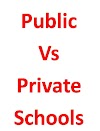Introduction: Verbal-Nonverbal
There is always debate between verbal and nonverbal communication. Whatever you think it is a matter of complementary and supplementary. It is in the sense that nonverbal communication is an essential aspect of verbal communication. Students are encouraged to expose the meaning that way.
Verbal Communication
Verbal the term suggests the use of
words and sentences. There is a language that the user uses! For example if your
guest say
Thank You in the response of your
hospitality at star hotel is a typical example of verbal communication.
Communication by using a language is verbal communication. Many people believe
this is the one and only form of communication. While learning a second
language people practice the vocabulary and structure of that language.
In English language the basic
sentence pattern is SVO whereas SOV fits in Hindi language.
Nonverbal Communication
Nonverbal is popularly understood as
the process of message exchange without using words and sentences. In the surface
observation, nonverbal seems very limited or sometimes one can ask by the way
when do we use nonverbal? As we communicate message through the language use.
Although, nonverbal communication
is not a considerable factor for many people, it is secretly handling many
affairs and becoming the mystery of success and satisfaction both in personal
and professional life.
For example
A smile can express more than one
hundred words! But for nonverbal context plays very vital role. The role of
nonverbal is more highlighted in the business world. It is more preferable when
we share emotions, feelings and attitudes. In the Indian context, a girl in the
response of love proposal of the boy just nodding her head in the sense of
accepting the proposal with gentle and shy smile is more favorable than the
simple response the American girls have 'I love you too'.
If somebody asks me to compare the
verbal with nonverbal communication or which is more powerful or effective then
I would have the answer like which is more valuable and useful iron or gold?
It is really interesting to grasp
the meaning and realities by comparing iron with gold. The layman may say gold
is very desirous, expensive and attractive than iron. S/he is right. But how
can you imagine the industrial growth and regulation in the absence of iron is
highly considerable.
Comparison between verbal and nonverbal is displayed as follows.
|
Verbal Communication |
Nonverbal Communication |
|
Uses words and sentences. |
Uses sign and symptoms |
|
Primary forms of communication. |
Secondary forms of communication |
|
Use maximum in everyday communication |
Use minimum in everyday communication |
|
Highly priorities in schools and colleges |
Less priorities in school and colleges |
|
Examples. Use of sentences [I like it] |
Examples. Use of facial expression [Smile] |
|
Most of the time language specific i.e. language to language |
Most of the time universal i.e. everywhere same |
|
Most common in communicating information |
Most common in communicating emotions and feelings. |
The various types of nonverbal communications
As I have discussed above nonverbal
is the use of signs and symbols. There are some important nonverbal communication
in general.
a. Facial expression
It is useful to talk about facebook
while dealing the term facial expression under nonverbal communication. You
might be surprised by the statement how can we connect facial expression with
facebook. Obviously, even though it is indirect, face is book where you can get
many information, ideas, opinions, feelings and emotions etc.
By using facial expression we can
share and receive a huge amount of information. It is more appropriate to understand
whether the speaker is happy or sad, in a similar line excited or frustrated
etc.
b. Eye contact
Eye contact is another required
nonverbal forms of communication in both personal and public communication.
Either you make eye contact or appeal to make eye contact to your audience is everybody's
wish.
Eye contact with no doubt gives you
better feeling in communication. Most of the time speakers or senders they
require eye contact to better understand themselves. However eye contact is culture
specific. For example
Making eye contact in present day
world is in general is good or required. But culturally people do not entertain
if you make eye contact in Japan mainly with seniors and teachers it is not
easily acceptable. BUT the case is opposite in United States. People whoever
juniors or seniors they appeal for the eye contact. It is like sugar in coffee
in US! A professional communicator has to understand such culture specific
things as well.
c. Body posture and movement
Communication with frozen body is
almost the requirement in traditional and conservative thinking. During talking
with the elite people and king and queen people would stand like a statue with
little bowing the head would be taken as the best position but the time has
changed a lot! Today neither you freeze your body nor you expect it. We simply
have body movement while communicative orally. The body posture while
presenting your ideas with mass and how the posture of your audience is
communicates many things.
d. Physical Space/ Distance
What is the appropriate distance
while greeting somebody by shaking hand? Have you ever think that way?
Obviously not.
You are really encouraged to think
and learn about it. The physical distance is another important aspects. It is determined
by the subject matter and the relation of participants with each other. It means
who is communicating what with whom is a great question to understand physical
distance. For example if you are suggesting some feedback to your best friend
about his/her more personal affair you certainly be in close or almost touching
each other. But while delivering political speech in a more public scene
automatically requires more distance.
e. Touch
Touching is another nonverbal
communication. We touch people to show our love and attachment. For many people
touch might have very limited scope in communication but that is not true!
We hug, tough, hold hand, tap etc
mainly during conversation with friends and relatives. All those forms of
communication have very strong impact to promote the bond in business as well.
Mainly children and loved ones
entertain touch!
Concluding the idea, both verbal and
nonverbal are important forms of communication. Communication is the life blood
of any business organization and houses. It is equally important both for private
and public communication, formal and informal communication everywhere!
Communication in Contemporary Organizations
Communicating with Technology [Use of Technology in Communication]
Business and Professional Etiquette: Types, Importance/Role , Do's and Don'ts










0 Comments